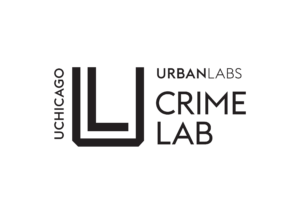
Thinking about Thinking for Crime Prevention
Organization : University of Chicago Crime Lab
Project Overview
Project Summary
Male juvenile arrestees in the Cook County Juvenile Temporary Detention Center (JTDC) were offered a daily program teaching them to be less automatic in decision-making when facing high-stakes situations.
Impact
Participation reduced readmission rates to the detention center by 21%.
Cost
The intervention cost $60 per participant.
Source
Source
Challenge
When youth deemed to be at elevated risk for violence are arrested, they are sometimes detained while waiting for their cases to be heard. However, detention by itself is not a fix for the underlying challenges that lead youths to violence. In Chicago, nearly half of youths leaving temporary detention are rearrested within three years. The youth in this study had on average been arrested eight times in the past and were on their third entry into juvenile detention. Therapeutic interventions—including what psychologists call socio-emotional supports—may help to reduce juvenile crime by giving youths tools to think about their thinking and improve decision-making.
Design
Researchers offered male youth detained at the Cook County Juvenile Temporary Detention Center twice-daily group cognitive behavioral therapy (CBT) sessions, designed to get youth to “think about their thinking.” The sessions were offered when youth were not attending the school inside the JTDC, replacing time that had typically been unstructured. Cognitive behavior therapy (CBT) is a time-limited intervention designed to reduce behavior problems and strengthen social, emotional, and behavioral skills by teaching people to relate to their thoughts in a more realistic and effective way. In CBT, youths learn new, more effective patterns of thinking and relating to their environment, including problem-solving and conflict-resolution skills.
The program required youth to carry out “thinking reports” every time their misbehavior causes detention staff to give them a “time out” (a certain amount of time alone in their cell). The program also continually emphasizes the importance of learning to “stop, look, and listen.”
Key types of activities in the curriculum include reflective/introspective, skill-building, and stories and discussion, among others. Examples are given below.

Impact
A randomized evaluation found that participation reduced readmission rates to the JTDC by 21% in the 18 months following release. Only about a fifth of the control group juveniles had not been re-admitted to the JTDC within 18 months, therefore program participation increased the chances of avoiding readmission by 80%.
Implementation Guidelines
Inspired to implement this design in your own work? Here are some things to think about before you get started:
- Are the behavioral drivers to the problem you are trying to solve similar to the ones described in the challenge section of this project?
- Is it feasible to adapt the design to address your problem?
- Could there be structural barriers at play that might keep the design from having the desired effect?
- Finally, we encourage you to make sure you monitor, test and take steps to iterate on designs often when either adapting them to a new context or scaling up to make sure they’re effective.
Additionally, consider the following insights from the design’s researcher:
- The JTDC program had to “tell, not show” given the limitations of operating in a secure facility. For example, in the JTDC curriculum there are no immersive / experiential activities (like the stick or the fist) or even any physical activities (including no sports). In addition to reflective / introspective activities, “skill-building” activities are common in the JTDC curriculum. The “skill-building” curriculum focuses on helping youth “keep cool when they are angry” (using anger expression and relaxation techniques), as well as on things like setting goals, interpersonal problem solving, and paying attention to one’s feelings.
- The key component of the intervention is to teach youth to be less automatic. The intervention is not about uniformly changing what the automatic responses are. Instead, it is to help youth learn when they should be automatic, and to identify situations where they ought to slow down and consider whether their interpretations of the situation are correct and whether their automatic assumptions and responses are useful.
- A token economy system was used to help maintain order in this program. This is used to reinforce the CBT curriculum by rewarding positive behaviors or thoughts consistent with these lessons.
- Staff should be trained to keep youth engaged and deliver the program effectively.
Project Credits
Researchers:
Sara B. Heller University of Michigan
Anuj K. Shah University of Chicago
Jonathan Guryan Northwestern University
Jens Ludwig University of Chicago
Sendhil Mullainathan University of Chicago
Harold A. Pollack University of Chicago


